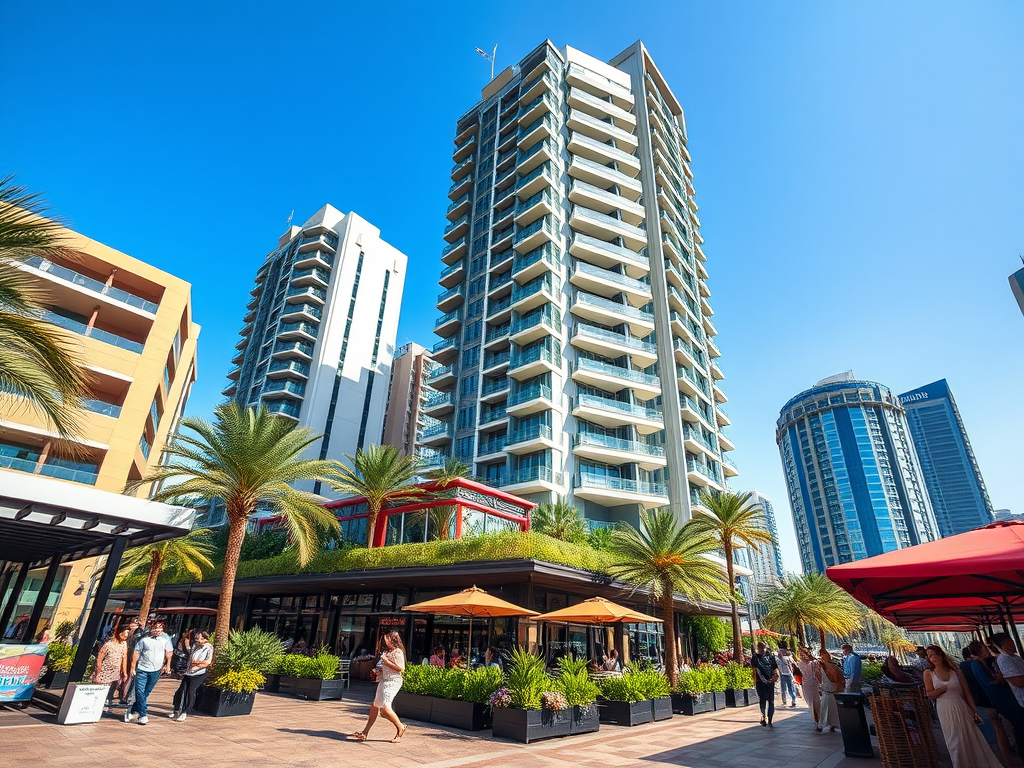Dubai stands at the crossroads of luxury and innovation, drawing the attention of global investors keen on maximizing returns. With its impressive skyline and dynamic economic environment, the city presents unique opportunities in the real estate sector. As rental prices fluctuate, understanding the underlying factors that contribute to rental yields is paramount for anyone looking to invest wisely. This article provides a comprehensive exploration of Dubai’s rental yields, illuminating what potential investors should keep in mind to navigate the market confidently. Whether you’re a seasoned investor or new to the real estate scene, grasping these concepts will empower you to make informed decisions. As we delve deeper, you will discover the allure of Dubai’s real estate market and how to capitalize on it for profitable returns.
Understanding Rental Yields

Rental yield is a critical concept for assessing the potential returns on a property investment. It is a straightforward calculation: the annual rental income divided by the property’s total value, expressed as a percentage. With the rapid development in Dubai, high rental yields offer attractive opportunities for investors seeking to diversify their portfolios. Evaluating yields helps highlight which properties are most likely to deliver solid returns over time. Consequently, high rental yields often signal strong demand and a robust rental market, which can be incredibly appealing to investors. Being aware of rental yields positions investors to make choices that can lead to long-term financial success.
Current Trends in Dubai’s Rental Market

The rental market in Dubai is constantly evolving, spurred by various economic conditions and demographic trends. A number of factors influence the rental landscape, shaping investment opportunities for savvy buyers. Notably, factors such as population growth, economic stability, and changes in tourism play a significant role. Investors should stay abreast of these trends to make informed decisions and align their investments with market demands. For instance, the recent Expo 2020 has had a profound impact on rental prices, bringing in increased interest from both tourists and expatriates alike. This surge in activity presents a ripe environment for property investments.
Certain neighborhoods are proving to be particularly lucrative for rental investments. Areas such as Dubai Marina, Downtown Dubai, and Jumeirah Lake Towers are increasingly popular, showcasing high demand among renters. Investors are reaping the benefits of the city’s cosmopolitan lifestyle and urban amenities in these locales. The allure of beachfront properties and luxurious living spaces fuels this demand, making them prime investment targets. Furthermore, neighborhoods that cater to the growing expatriate community are also seeing strong rental yields. As the population continues to rise, the need for residential spaces in these areas equals a greater chance for profitable rentals.
| Neighborhood | Average Rental Yield (%) | Popular Property Types |
|---|---|---|
| Dubai Marina | 7.5 | Apartments, Penthouses |
| Downtown Dubai | 6.2 | Luxury Apartments |
| Jumeirah Village Circle | 8.0 | Villas, Townhouses |
Factors Influencing Rental Yields
Various elements inherently contribute to the fluctuations in rental yields within Dubai’s real estate market. A fundamental factor is the balance between property supply and demand, which significantly affects rental prices. Areas experiencing rapid population growth often witness greater rental demand, consequently inflating yields. Additionally, economic conditions play a pivotal role; consistent growth in the economy directly correlates with an increase in investment interest and property desirability. Lastly, government initiatives aimed at attracting foreign investment also bolster the real estate market, leading to favorable conditions for increasing rental yields. To harness the potential of Dubai’s market, it’s essential for investors to grasp these influential factors.
- High demand with limited supply tends to drive rental prices upward.
- Market saturation can depress yields and impact profitability.
- Geographical hotspots often experience fluctuating rent prices based on demand.
Calculating Rental Yields in Dubai
Having a clear understanding of how to calculate rental yields can significantly impact an investor’s financial decisions. The formula is intuitive: divide the annual rental income by the property’s purchase price, then multiply by 100 to get the percentage. For instance, if you purchase a property for AED 1,000,000 and it generates AED 80,000 in annual rent, the yield would be 8%. This simple yet effective calculation acts as a lens through which potential investors can evaluate the feasibility of their investments. To maximize returns, investors should not only focus on yields but also consider additional costs like maintenance and property management.
- Step 1: Determine annual rental income.
- Step 2: Calculate the purchase price of the property.
- Step 3: Apply the yield formula (Annual Rent / Property Value * 100).
Strategies for Maximizing Rental Yields
To enhance rental yields in Dubai’s competitive landscape, investors can adopt several strategic approaches. Firstly, effective property management is paramount; ensuring properties are well-maintained can lead to higher tenant satisfaction and retention rates. Moreover, securing reliable tenants through thorough vetting processes minimizes vacancies and maximizes income. Additionally, understanding market trends can help in selecting the right property type—for instance, knowing whether apartments or villas are in greater demand can steer investment choices. Ultimately, a tailored investment strategy considering location, property type, and management practices will set investors up for financial success.
- Conduct regular maintenance to keep properties in top condition.
- Implement tenant retention strategies to reduce turnover.
- Utilize professional property management services when needed.
Conclusion
Investing in Dubai’s rental market offers a wealth of opportunities for those equipped with the right knowledge. Navigating this vibrant landscape involves a deep understanding of rental yields, current trends, and impactful factors. By calculating potential returns, adopting strategic approaches to property management, and staying aware of market developments, investors can take full advantage of the city’s lucrative real estate opportunities. From assessing emerging neighborhoods to recognizing the influence of economic conditions, a holistic view enables investors to make well-informed decisions. Ultimately, with the right insights and a proactive strategy, Dubai’s rental market can unlock substantial returns for savvy investors.
Frequently Asked Questions
- What is a good rental yield in Dubai? A rental yield of between 6-10% is generally considered good in Dubai, depending on the location and type of property.
- How do I calculate rental yield? Rental yield is calculated by dividing the annual rental income by the property’s purchase price, then multiplying by 100.
- Which neighborhoods in Dubai offer the highest rental yields? Areas such as Dubai Marina, Jumeirah Village Circle, and Deira typically offer higher rental yields.
- How does the current economic climate affect rental yields? A strong economy tends to increase demand for rentals, directly impacting rental yields positively.
- Is property management necessary for rental properties in Dubai? While not mandatory, professional property management can enhance tenant satisfaction and optimize returns on investment.
